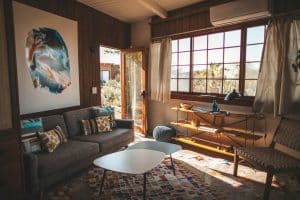
Image source: www.wikimediacommons.org
Grow old with me! The best is yet to be.
? Robert Browning
If we want to deepen our understanding of what it means to grow old in America, we need to look beyond both our country and the time in which we’re living. Learning how traditional societies in history have treated the aging process can help us to cultivate a greater perspective on the aging process as a whole, and gain inspiration for providing our aging population with better care and respect.
Author of the acclaimed books Guns, Germs, and Steel and Collapse, civilization expert Jared Diamond has been studying past cultures for much of his life. He takes a closer look at society survival in his most recent book, The World Until Yesterday: What Can We Learn From Traditional Societies, where he “compares traditional, small, tribal societies with our large, modern societies, with respect to many topics” including growing older. In his TED talk on the subject, Diamond speaks about the lessons we can learn from tribal societies in regards to aging.
Sticking together
In traditional societies, it’s common for families to live together, or close-by, for their entire lives. They also tend to keep their childhood friendships active through to old age, and stay integrated within their community. Diamond contrasts this lifestyle to that of present-day America: “Most people in the U.S. end up living separately from their children and from most of their friends of their earlier years, and often they live in separate retirement homes for the elderly.”
If we can begin to view the aging process as innately valuable to our overall life experience, we’ll be naturally inclined to respectfully integrate it into our culture. Whether or not we choose to enter a retirement home is beside the point; it’s about recognizing that social connection and community integration are important in old age.

Image source: www.wikimediacommons.org
Usefulness and wisdom
Diamond warns that not all traditional societies treat their elders well, but there are several reasons that explain why certain societies do respect the elderly — at the end of the day, it comes down to value.
Being useful creates value: when a traditional society sees that older people can be useful — from baby-sitting children to food production — it is likely that they will be treated respectfully. They will be well-fed, and “continue to live in the same hut or in a nearby hut near their children, relatives, and lifelong friends.” Likewise, a traditional society might see the elderly as very wise, and therefore valuable. For example, before the advent of books and the internet, old people held a large amount of knowledge and experience that could not be obtained anywhere else.
Cultural value, for better and worse
Another factor that influences how well the elderly are treated is the cultural values of a society. Diamond reveals that while parts of the world like East Asia emphasize respecting the elderly, America has an unfortunate reputation for discriminating against old age. He also presents a clear explanation for America’s ageist society: our culture places high value on work ethic, and thus older people are seen as useless when they stop putting in long hours at the office. Our culture values independence, “so we instinctively look down on older people who are no longer self-reliant”; and our culture has an obsession with youth, propagated by the advertising industry.
Present-day positive change
The great news is that we currently have better medical care and a higher quality-of-life than ever before: “our lives are longer, materially much richer, and less plagued by violence.” So what can we learn from traditional societies’ treatment of the elderly? We work on becoming more social, and maintaining close connection with friends and family as we grow into old age. In the same vein, we can begin to let go of needing to be self-reliant, and start welcoming help from others. Perhaps most importantly, we can start to recognize the intrinsic value of the aging process, and offer respectful treatment to all of our elders.
How body from spirit slowly does unwind, until we are pure spirit at the end.
? Theodore Roethke
If you are unsure of how to best help an aging loved one, the trained and compassionate staff at the Institute of Aging is here to help with your decisions and offer guidance in gaining the best in at-home senior care. Contact us to find out more.







